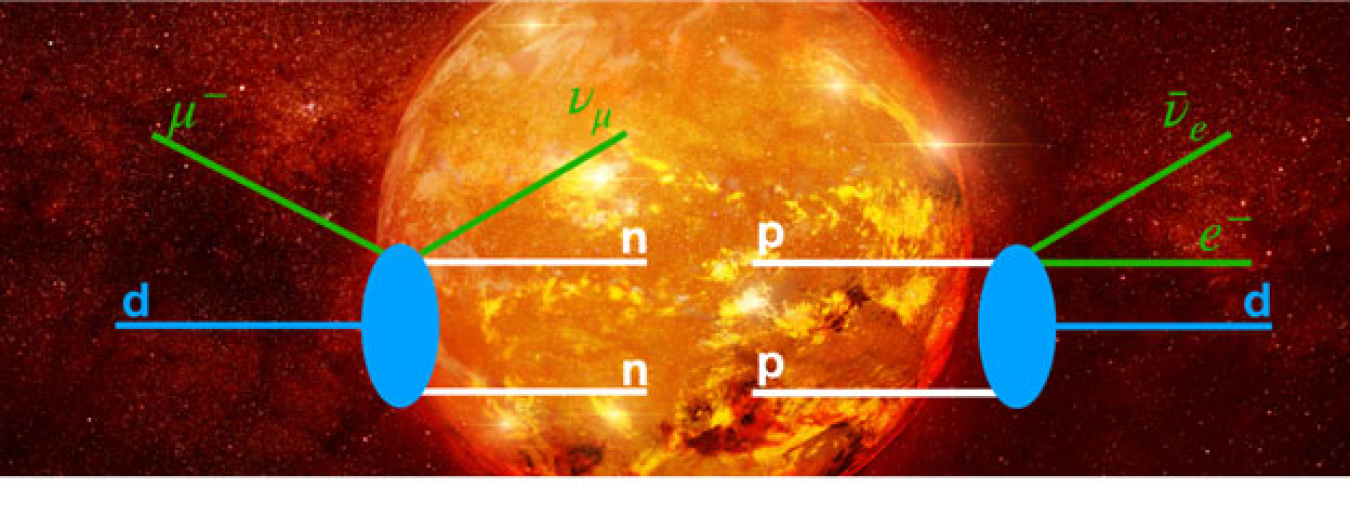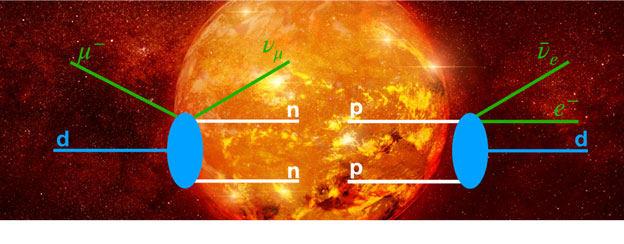
The Science
The muon is a subatomic particle that resembles an electron but is 200 times heavier. It interacts with nuclei through the weak force, one of the four fundamental forces in the Universe. When a muon binds with a deuteron (composed of one proton and one neutron), it forms a system with two neutrons. This process is analogous to proton-proton fusion, where two protons combine to form a deuteron. This is a crucial step in how stars produce energy. Although laboratory studies of proton-proton fusion are impractical, calculations for muon capture offer valuable insights. Nuclear theorists examined this muon capture, quantifying the theoretical uncertainty relevant for comparison with experimental data and for testing predictions involving proton-proton fusion.
The Impact
This research investigated the muon capture rate using advanced models for describing the interaction among nucleons and their interactions with the muons. The adopted theoretical framework allowed the researchers to identify the principal sources of uncertainties and to quantify their effects. They compared the effectiveness of this approach with results in previous studies. This comparison found an uncertainty of approximately 2%, currently lower than experimental errors. This study supports ongoing efforts to enhance the accuracy of muon capture measurements. It also paves the way to using the same theoretical framework to study proton-proton fusion and other processes. These studies will help scientists model the hydrogen burning phase of stars and understand solar neutrino fluxes.
Summary
A collaborative team of nuclear theorists including researchers from the University of Pisa and the Istituto Nazionale Fisica Nucleare in Italy, the Theory Center at the Thomas Jefferson National Accelerator Facility, and Washington University in St. Louis conducted a novel study focusing on muon capture on the deuteron. To investigate this process, the researchers used advanced models derived from chiral effective field theory and consistent currents. These models allowed estimating the capture rate and quantifying its uncertainty by considering various factors such as model dependence, chiral convergence, and the uncertainty in the single-nucleon axial charge radius. The findings demonstrated agreement with existing theoretical results obtained using different potential models within chiral effective field theory, providing a theoretical uncertainty of approximately 2%.
In the future, the authors aim to extend the study to include muon capture processes on helium-3 and lithium-6, comparing the results with previous studies. They also intend to apply this framework to investigate other weak processes relevant to solar standard models and solar neutrino fluxes, such as proton weak capture on another proton and on helium-3 (hep reaction). These endeavors will provide valuable insights into astrophysical S-factor values at zero energy, accompanied by estimations of the associated theoretical uncertainties.
Contact
Maria Piarulli
Washington University in St. Louis
[email protected]
Laura E. Marcucci
University of Pisa and INFN-Pisa
[email protected]
Funding
This research was supported by the Department of Energy Office of Science, Office of Nuclear Physics.
Publications
Ceccarelli, L., et al., Muon capture on deuteron using local chiral potentials, Frontiers in Physics 10, 1049919 (2023). [DOI: 10.3389/fphy.2022.1049919]
Scraped from https://www.sourcearu.com




